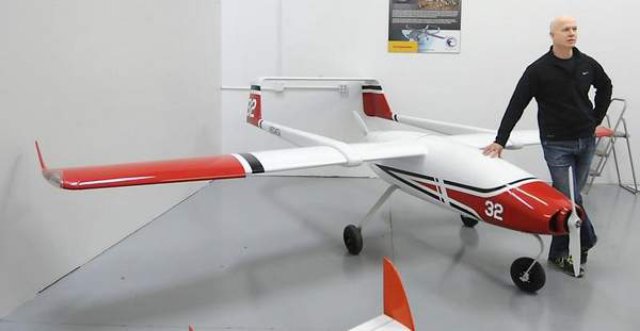Efforts to coax a little extra punch out of the Sierra’s winter storms could soon involve the use of UAS, with the unmanned aircraft potentially offering significant benefits when it comes to boosting the region’s water supply and putting more snow on its ski slopes.Hopes are high that nature will offer a decent snow season after two dry years in a row. Still, Reno’s Desert Research Institute is ready to go with a proven cloud-seeding programme designed to squeeze additional moisture out of those storms that do arrive.
In the Lake Tahoe-Truckee area, funding provided by regional water suppliers will allow continued operation of five mountaintop generators that spray particles of silver iodide into storm clouds, enhancing ice particle formation and boosting snowfall. To the south, where the mountains drain into the Walker River, three ground generators will be employed this winter in a program that also involves use of airplanes to seed storms from the air.
But a new project jointly pursued by DRI and Reno-based Drone America, LLC will soon explore effectiveness of using UAS for cloud seeding and some describe the idea as particularly promising.
“This is the way to move the field forward, and I firmly believe that,” said Jeff Tilley, director of DRI’s weather modification programme.
Testing is set to start in the Walker River drainage in the fall of 2014, with a drone likely operating out of Hawthorne and pilots controlling the aircraft from a high-tech trailer parked there. If Nevada is successful in its bid to become one of six states selected as a test site for unmanned aerial vehicles — and a decision is expected to be announced soon by the Federal Aviation Administration — operations could also be flown out of Stead, Tilley said.
If things go as hoped, UAS might before long be employed for cloud seeding elsewhere in the country and potentially around the globe, said Mike Richards, president of Drone America.
“If we can show it has a positive effect in the area, it becomes a viable proposition for other areas,” Richards said. “Cloud seeding to us seems to be a logical step.”
UAS — perhaps best known for raining destruction from the skies over South Asia — have many applications beyond those military, Richards said. His company’s engineers are busy with ideas to employ unmanned aircraft for search and rescue missions, wildlife studies, disaster relief and spraying mosquitoes. Within a couple of years, one prototype machine now parked in the company warehouse could be developed into a larger UAS capable of dropping chemical fire retardant and fighting wildfires from the sky.
“Just think of them as a flying Swiss Army Knife,” Richards said of the multiple peaceful applications offered by the machines. “It’s a tool. How you apply them is up to you, and what you can do with them is amazing.”
Details are still being worked out, including the best method of deploying silver iodide from a drone into storm clouds, but the aircraft to be used is already ready for flight. The Phoebus UAS costs about $400,000 and is nearly 12-feet long with a 24-foot wingspan. It can stay in the air for up to 15 hours and fly at speeds of up to 125 mph.
From Tilley’s perspective, there are many potential benefits.
Ground-based cloud seeding generators are effective but, obviously, are also fixed in place and unable to target specific parts of oncoming storms. Manned aircraft can do so but aerial operations are expensive, with paid pilots often waiting on the ground for proper storm conditions to take shape. Flying through storms can also be dangerous.
Use of UAS can combine the flexibility of manned aerial cloud seeding at less cost and with less danger to people, Tilley and Richards agreed.
“This unmanned aircraft approach can bridge that gap,” Tilley said. “This is a way to get the best of both worlds.”
Source: RGJ

